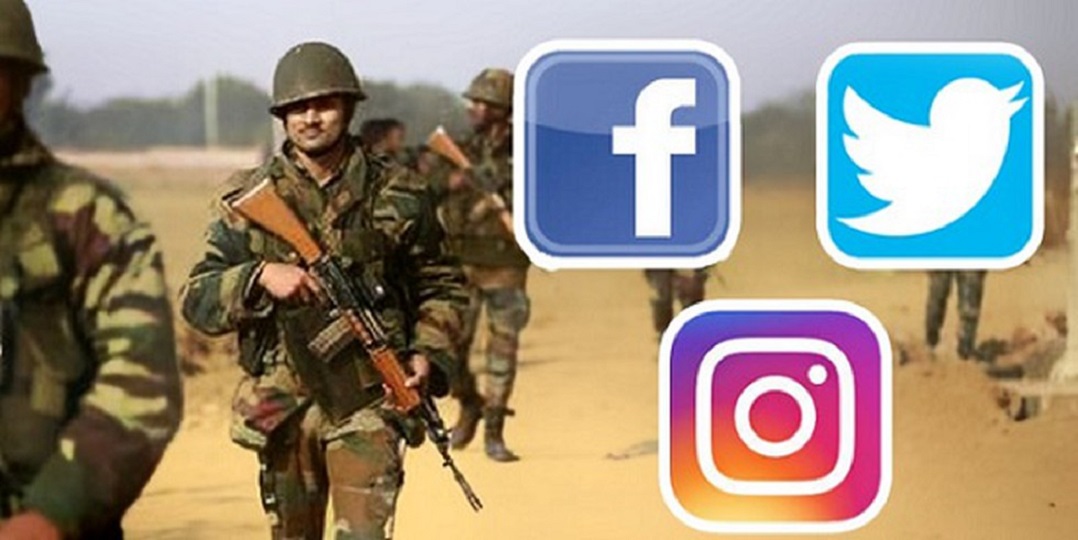The media has an important role in dealing with the news concerned with the Indian Armed Forces and the nation’s security.
The relationship between media and the Indian Armed Forces is a critical aspect that requires close examination in the modern information age. Media plays a pivotal role in shaping public opinion, influencing policies, and impacting the functioning of various institutions, including the armed forces. This article delves into specific instances in India where media coverage has had a significant impact on the functioning of the armed forces, shedding light on the challenges this dynamic poses.
Kargil Conflict and Reporting
During the 1999 Kargil Conflict, media coverage played a pivotal role in mobilising public support and fostering a sense of national unity. Journalists reported from the treacherous frontlines, providing real-time updates and humanising the sacrifices made by soldiers. However, this zealous reporting raised concerns about operational security. Some reports disclosed sensitive military strategies, prompting debates on the responsibility and ethical considerations of the media during wartime.
Surgical Strikes and Covert Operations
In the aftermath of the 2016 Uri terror attack, the Indian government authorised “surgical strikes” across the Line of Control as a response. The media’s extensive coverage of these covert operations garnered global attention and bolstered the image of the Indian Armed Forces. However, the fervent reporting also sparked discussions about the media’s role in divulging sensitive military actions, potentially compromising future operations and national security.
Indian Army’s Humanitarian Efforts and Media Narratives
Beyond times of conflict, the Indian Armed Forces engage in numerous humanitarian and disaster relief operations. While media coverage of these efforts can play a significant role in highlighting the military’s contributions to society, it often tends to focus disproportionately on negative narratives, such as isolated incidents of misconduct. This skewed portrayal can overshadow the positive contributions and impact the morale of the armed forces.
Challenges of Disinformation and Social Media
The advent of social media has introduced novel challenges in the information landscape. Instances of fake news and disinformation spreading rapidly can influence public opinion and incite tensions, directly affecting the functioning of the armed forces. In response, the Indian Armed Forces have been adapting to this evolving media landscape, implementing measures to counter disinformation campaigns while promoting transparency.
Media Bias and Misrepresentation
Media bias and misrepresentation can distort public perception of the armed forces and their actions. Highlighting isolated incidents of misconduct or human rights violations without providing a balanced context can create a negative perception of the military as a whole. This can lead to public distrust, eroding support for the armed forces and hindering their effectiveness in fulfilling their duties.
Debates on Defence Procurement
Media discussions on defence procurement decisions have occasionally led to controversies and accusations of corruption. Unfounded or misleading allegations can undermine public trust in the armed forces and affect their functioning.
Censorship and National Security
Instances of media censorship during times of unrest and conflict have been contentious. While censorship may be viewed as a measure to prevent the spread of misinformation and maintain national security, it can also lead to accusations of suppressing dissenting voices. Balancing the need for information dissemination and security during critical situations remains a delicate challenge for both media and the Indian Armed Forces.
Mumbai Terror Attacks (2008)
During the 2008 Mumbai terror attacks, media coverage of the unfolding events was extensive and real-time, which posed challenges for the Indian security forces. The live coverage potentially aided the terrorists’ operations by providing them with information on the movements and tactics of security personnel, leading to concerns about operational security and the need for responsible reporting during ongoing crisis situations.
Suicide Attacks and Media Sensationalism
Media sensationalism following suicide attacks or terrorist incidents can inadvertently glorify the perpetrators and their ideologies. Focusing excessively on the attackers’ backgrounds and motivations without adequate context can lead to copycat incidents and impact national security.
Leaking Classified Information
In some instances, the media has been accused of publishing classified or confidential information leaked from official sources. This includes sensitive details about military equipment, troop deployments, or ongoing operations, which can compromise national security and impede the effectiveness of planned strategies.
Border Standoffs and Sensitive Reporting
During border standoffs with neighbouring countries, such as the Doklam standoff with China in 2017, media coverage can escalate tensions and impact diplomatic efforts. Irresponsible reporting or sensationalism can exacerbate the situation and limit the government’s room for manoeuvring.
Addressing Challenges and Future Perspectives
The challenges posed by the symbiotic relationship between media and the Indian Armed Forces require careful consideration. Responsible and ethical journalism, collaborative efforts between the media and the armed forces, and media literacy initiatives are imperative to foster a well-informed and resilient society. Striking a delicate balance between media freedom and national security interests is crucial for promoting transparency and safeguarding operational effectiveness.
Understanding the impact of media on the Indian Armed Forces and navigating the challenges posed by this dynamic is crucial for upholding democratic values, national security, and a well-informed public. By addressing the issues proactively and promoting a robust and informed discourse, collaborative efforts between media organisations, the government, and the armed forces can contribute to a stronger and more resilient nation.
Disclaimer: The views and opinions expressed by the author do not necessarily reflect the views of the Government of India and Defence Research and Studies
Image courtesy: Vajiramias






